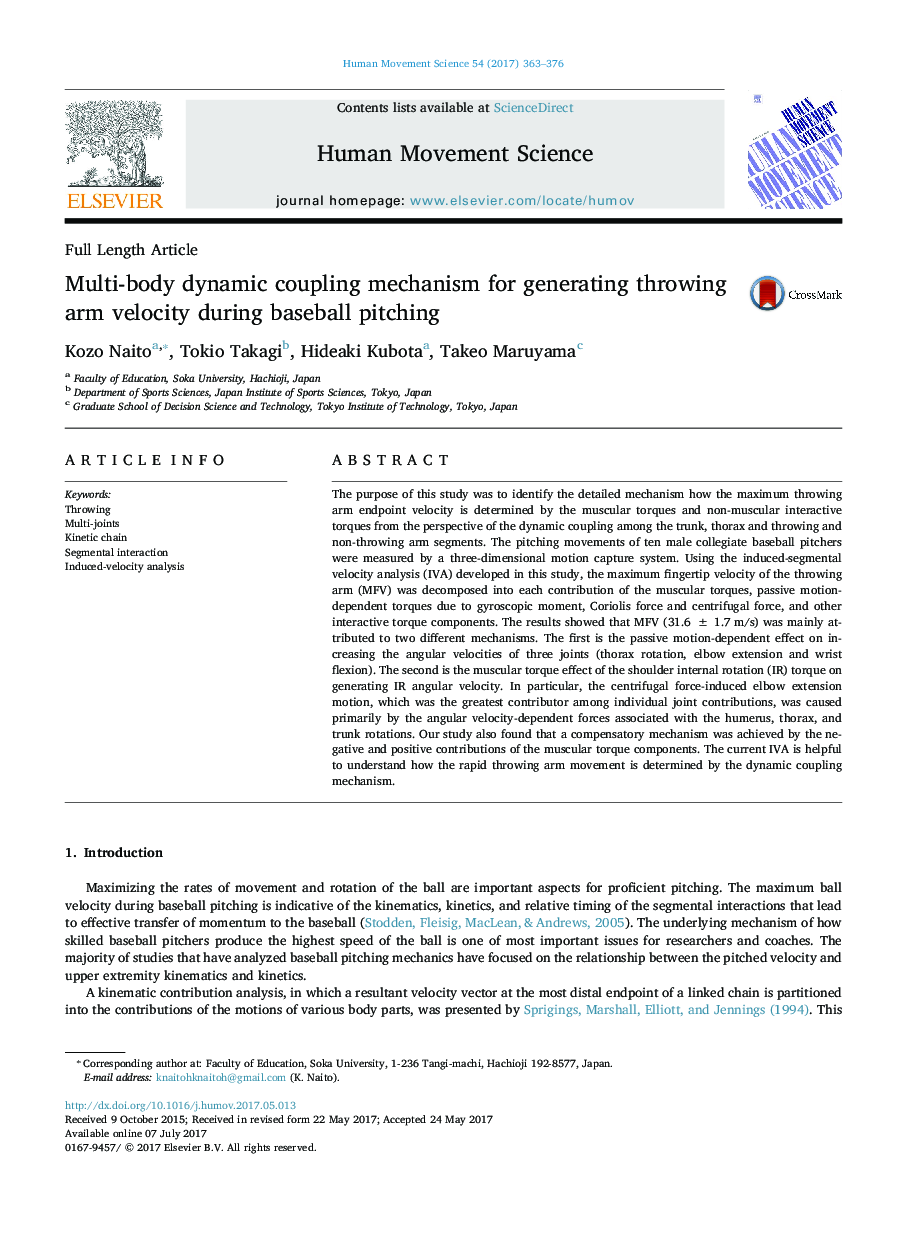| Article ID | Journal | Published Year | Pages | File Type |
|---|---|---|---|---|
| 5041996 | Human Movement Science | 2017 | 14 Pages |
â¢The determinants of maximum throwing arm endpoint velocity were identified.â¢Muscular and non-muscular torques were studied from a dynamic coupling perspective.â¢We hypothesized that passive torques would play the most essential role.â¢Indeed, passive torques accounted for a large portion of the maximum velocity.
The purpose of this study was to identify the detailed mechanism how the maximum throwing arm endpoint velocity is determined by the muscular torques and non-muscular interactive torques from the perspective of the dynamic coupling among the trunk, thorax and throwing and non-throwing arm segments. The pitching movements of ten male collegiate baseball pitchers were measured by a three-dimensional motion capture system. Using the induced-segmental velocity analysis (IVA) developed in this study, the maximum fingertip velocity of the throwing arm (MFV) was decomposed into each contribution of the muscular torques, passive motion-dependent torques due to gyroscopic moment, Coriolis force and centrifugal force, and other interactive torque components. The results showed that MFV (31.6 ± 1.7 m/s) was mainly attributed to two different mechanisms. The first is the passive motion-dependent effect on increasing the angular velocities of three joints (thorax rotation, elbow extension and wrist flexion). The second is the muscular torque effect of the shoulder internal rotation (IR) torque on generating IR angular velocity. In particular, the centrifugal force-induced elbow extension motion, which was the greatest contributor among individual joint contributions, was caused primarily by the angular velocity-dependent forces associated with the humerus, thorax, and trunk rotations. Our study also found that a compensatory mechanism was achieved by the negative and positive contributions of the muscular torque components. The current IVA is helpful to understand how the rapid throwing arm movement is determined by the dynamic coupling mechanism.
